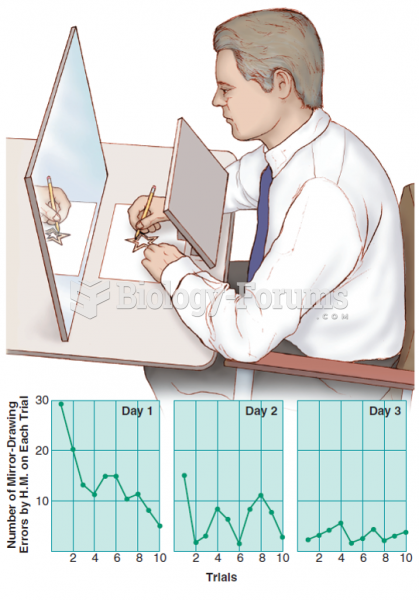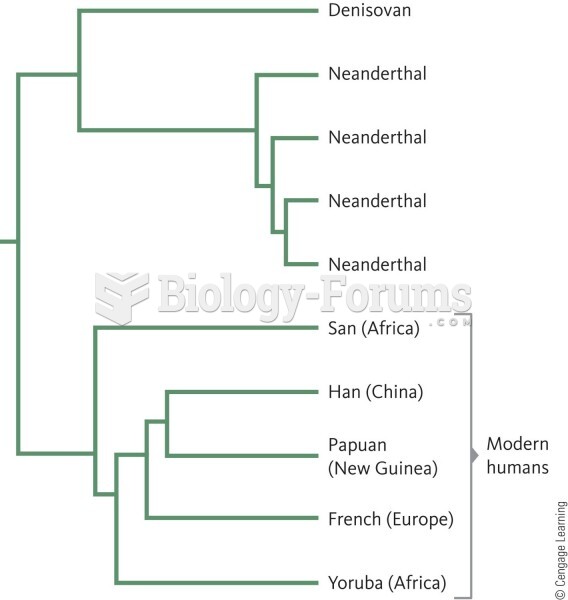|
|
|
An identified risk factor for osteoporosis is the intake of excessive amounts of vitamin A. Dietary intake of approximately double the recommended daily amount of vitamin A, by women, has been shown to reduce bone mineral density and increase the chances for hip fractures compared with women who consumed the recommended daily amount (or less) of vitamin A.
Malaria mortality rates are falling. Increased malaria prevention and control measures have greatly improved these rates. Since 2000, malaria mortality rates have fallen globally by 60% among all age groups, and by 65% among children under age 5.
Complications of influenza include: bacterial pneumonia, ear and sinus infections, dehydration, and worsening of chronic conditions such as asthma, congestive heart failure, or diabetes.
Illicit drug use costs the United States approximately $181 billion every year.
Nearly 31 million adults in America have a total cholesterol level that is more than 240 mg per dL.
 Gomphidae is an Odonata family that contains about 90 genera and 900 species. They are commonly refe
Gomphidae is an Odonata family that contains about 90 genera and 900 species. They are commonly refe
 he White-throated Bee-eater, Merops albicollis is a near passerine bird in the bee-eater family Mero
he White-throated Bee-eater, Merops albicollis is a near passerine bird in the bee-eater family Mero
 The Death of Socrates by Jacques Louis David. The eighteenth-century French painter David portrayed ...
The Death of Socrates by Jacques Louis David. The eighteenth-century French painter David portrayed ...




